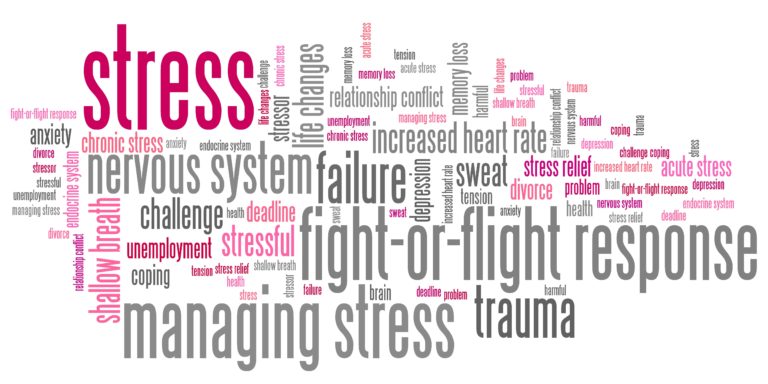Living with Complex PTSD often means navigating a landscape where reality can feel distant, fragmented, or surreal. If you’ve ever felt disconnected from your body, your thoughts, or the world around you during moments of stress, you’re experiencing dissociation—one of the most misunderstood yet common responses to trauma. Understanding this connection is the first step toward healing.
What is Dissociation?
Dissociation is a mental process that creates a disconnection between your thoughts, memories, feelings, actions, or sense of identity.
Think of it as your mind’s way of creating distance from experiences that feel too overwhelming to process in the moment.
Dissociation exists on a spectrum. Mild dissociation might look like daydreaming or “zoning out” while driving a familiar route. More severe dissociation can involve feeling detached from your body (depersonalization), perceiving the world as dreamlike or unreal (derealization), or experiencing gaps in memory.
Common dissociative experiences include:
- Feeling like you’re watching yourself from outside your body
- Experiencing emotional numbness or feeling “flat”
- Losing track of time or not remembering how you got somewhere
- Feeling disconnected from your emotions or physical sensations
- Perceiving the world through a fog or as if watching a movie
While everyone dissociates occasionally, those with Complex PTSD often experience dissociation more frequently and intensely, particularly when triggered by reminders of past trauma.
Types of Dissociation
Dissociation manifests in different ways, and understanding these variations can help you recognize what you’re experiencing and communicate more effectively with treatment providers.
Depersonalization
Depersonalization involves feeling detached from yourself. You might feel like you’re observing yourself from outside your body, watching your life unfold as if you’re a character in a movie. Some people describe feeling robotic, mechanical, or like they’re going through the motions without truly inhabiting their body. Your own voice might sound strange or unfamiliar, and your reflection in the mirror may not feel like “you.”
Derealization
Derealization is characterized by feeling disconnected from your surroundings. The world may seem foggy, dreamlike, or artificial—as though you’re living inside a bubble or looking at everything through a veil. Objects might appear distorted, colors may seem muted or overly bright, and familiar places can suddenly feel foreign or unreal. Time perception often shifts, with moments feeling slowed down or sped up.
Dissociative Amnesia
Dissociative Amnesia involves gaps in memory that can’t be explained by ordinary forgetfulness. You might lose time, forget significant periods of your life, or have no recollection of traumatic events. Some people experience “coming to” in unfamiliar places with no memory of how they got there, or find evidence of activities they don’t remember doing.
Emotional Numbing
Emotional Numbing represents a shutdown of emotional experience. Rather than feeling disconnected from your body or environment, you feel cut off from your emotions. Even situations that should evoke strong feelings produce only blankness or a vague sense of distance. This protects you from overwhelming emotions but can also prevent you from experiencing joy, connection, or other positive feelings.
Dissociative Flashbacks
Dissociative Flashbacks blur the line between past and present. Unlike narrative memories of trauma, dissociative flashbacks make you feel as though the traumatic event is happening again right now. You may lose awareness of your current surroundings and become completely absorbed in the traumatic memory, experiencing the same terror, helplessness, or pain you felt during the original event.
Many people with C-PTSD experience multiple types of dissociation, sometimes simultaneously. The type and intensity can vary depending on stress levels, triggers, and overall nervous system state. Recognizing your specific dissociative patterns is an important part of developing targeted coping strategies.
Understanding the Connection Between C-PTSD & Dissociation
Complex PTSD develops from prolonged, repeated trauma—often occurring during childhood or in situations where escape wasn’t possible. Unlike single-incident PTSD, C-PTSD typically results from ongoing abuse, neglect, domestic violence, or other chronic traumatic circumstances.
Dissociation becomes intertwined with C-PTSD because it served as a survival mechanism during the original trauma. When a child or person cannot physically escape a harmful situation, the mind creates psychological escape through dissociation. Over time, this protective response becomes automatic, activating even when the danger has passed.
The relationship between C-PTSD and dissociation creates a challenging cycle. Traumatic memories can trigger dissociative episodes, while dissociation itself can interfere with processing and healing from trauma. Many people with C-PTSD describe dissociation as both a shield and a barrier—it protected them once, but now prevents them from fully engaging with life and relationships.
This connection explains why traditional PTSD treatments don’t always work for Complex PTSD. The dissociative component requires specialized approaches that help individuals safely reconnect with their experiences while building tolerance for difficult emotions.
Dissociation & the Fight, Flight, Freeze Response
To understand dissociation, we need to look at how the nervous system responds to threat. When we perceive danger, our autonomic nervous system activates one of several survival responses: fight, flight, freeze, or fawn.
Fight and flight trauma response types are mobilize the body for action—confronting the threat or escaping it. These responses work well when action is possible and effective.
Freeze occurs when fighting or fleeing isn’t viable. The body becomes immobilized, heart rate may slow, and the person might feel “stuck” or unable to move. This isn’t a choice or weakness—it’s an automatic neurobiological response.
Dissociation can be understood as an extension of the freeze response, sometimes called “psychological freezing.” When physical immobilization isn’t enough to ensure survival, or when the threat is psychological rather than physical, the mind creates distance from the experience itself. It’s the last line of defense when all other options have been exhausted.
In C-PTSD, the nervous system often remains dysregulated long after the trauma has ended. This means dissociation can be triggered by situations that resemble past trauma—a raised voice, a particular smell, feeling trapped or powerless—even when there’s no current danger. The nervous system is essentially stuck in a pattern established during the original trauma.
Understanding this neurobiological basis helps reduce shame around dissociation. It’s not a character flaw or sign of weakness—it’s evidence of how powerfully the mind protected you when you needed it most.
How Does Treatment for C-PTSD Help Alleviate Traumatic Symptoms?
Recovery from C-PTSD and dissociation is possible with specialized, Complex trauma treatment. Effective approaches recognize that healing happens in stages and that safety—both physical and psychological—must be established before deep trauma work begins.
Phase-Oriented Treatment follows a structured approach: establishing safety and stabilization, processing traumatic memories, and integration and reconnection with life. Rushing to process trauma before building coping skills can actually increase dissociation and retraumatization.
Evidence-Based Therapies for C-PTSD include:
- Trauma-Focused Cognitive Behavioral Therapy (TF-CBT) helps identify and change unhelpful thought patterns while gradually processing traumatic memories
- Dialectical Behavior Therapy (DBT) teaches skills for emotion regulation, distress tolerance, and interpersonal effectiveness—crucial for managing dissociative symptoms
- Somatic Experiencing and Sensorimotor Psychotherapy focus on the body’s role in trauma, helping individuals release stored trauma responses and reconnect with physical sensations safely
- Grounding and Present-Moment Techniques serve as essential tools for managing dissociation. These might include the 5-4-3-2-1 sensory technique, holding ice cubes, naming objects in the room, or practices that help anchor you in the here and now.
- Nervous System Regulation through breathwork, mindfulness, yoga, or other body-based practices helps retrain the nervous system to respond more flexibly to stress rather than automatically defaulting to dissociation.
Treatment also addresses the relational wounds common in C-PTSD. The therapeutic relationship itself becomes a space to practice safe connection, establish boundaries, and experience consistent support—often corrective experiences for those whose trauma occurred in relationships.
The goal isn’t to eliminate dissociation entirely, but to reduce its frequency and intensity while developing alternative coping strategies. Over time, many people find they can recognize dissociation earlier and use grounding techniques to stay more present, even in challenging moments.
Find Mental Health Help in Nashville Today
If you recognize yourself in these descriptions of C-PTSD and dissociation, please know that you don’t have to navigate this journey alone. At Arbor Wellness, we specialize in trauma-informed care that honors your unique experiences and meets you exactly where you are.
Our compassionate team understands the complexities of C-PTSD and dissociation. We create individualized treatment plans that prioritize your safety, build on your strengths, and move at a pace that feels manageable for you. Healing is possible, and it begins with reaching out.
Call us now at 629-217-2658 to learn more about our mental health treatment programs or verify your insurance now.

























